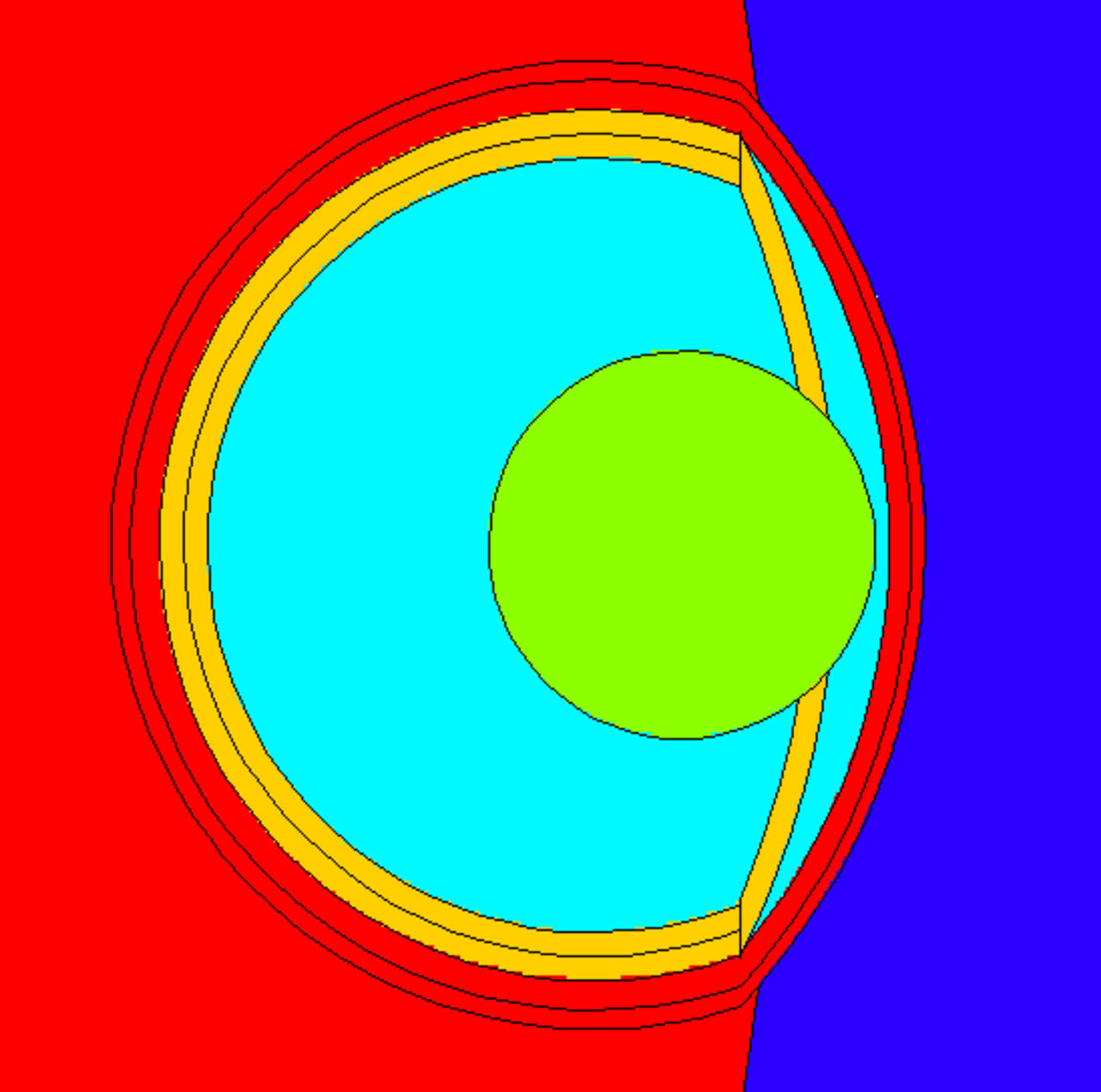Project
Modelling of radiation effects in marine organisms

Modelling of radiation effects in marine organisms
So far, the calculation of radiation exposure of marine animals is highly inaccurate. With anatomically detailed models for marine animals, we want to improve it considerably.
Background and Objective
In 2008, the International Commission on Radiological Protection (ICRP) introduced its own radiation protection scheme for the environment. For this purpose, reference animals and plants (RAP) were defined. The list of RAPs includes deer, rat, duck, bee, worm, pine, and grass for the terrestrial environment; trout, flatfish, crab, frog, and seaweed for the aquatic environment. ICRP Publication 108 presented computational models for all RAPs that were used to calculate the absorbed fraction and corresponding dose coefficients for 75 radionuclides.Based on the simplicity with which the initial models calculated/estimated radiation effects on humans, all models for RAPs were defined with simple, mostly ellipsoidal bodies. This simplistic approach is very effective in terms of time, labor, and cost savings in application, but undermines the anatomical accuracy of dosimetric calculations.In this project, we will develop anatomically detailed models for marine reference species. These will allow improvement of dose estimation.
Approach
We develop anatomically detailed mathematical models for marine reference species. Together with Monte Carlo codes for ionizing particle transport, dose conversion coefficients are calculated for typical exposure scenarios.
Data and Methods
The results will be in the form of dose conversion coefficients that can be used to estimate the dose to marine species in typical exposure scenarios.
Our Research Questions
- How can the estimation of radiation dose in marine species be improved?
- How can the uncertainty of dose estimation in marine species be reduced?
- Are marine species protected?
Preliminary Results
The first model for a fish eye lens as been successefully concluded and published. The results show that in the Baltic, the Cs-137 activities dont present anny risk for the Baltic fish vision.
In case of an accidental release of radionulids, the calculated conversion coefficients can be rapidly used for new estimation of the risk.
New models for other organs and species are being planned.
Determination of dose conversion coefficients that allow us to have a realistic estimation of the dose for reference marine species.
Involved Thünen-Partners
Duration
Permanent task 1.2015 - 12.2027
More Information
Project status:
ongoing
Publications
- 0
Aust M-O, Nogueira P (2021) Radioaktive Stoffe in Fischen [online]. In: Umweltradioaktivität in der Bundesrepublik Deutschland : Bericht der Leitstellen des Bundes und des Bundesamtes für Strahlenschutz ; Stand 2021 ; Daten und Bewertung. Bonn: Bundesministerium für Umwelt, Naturschutz und nukleare Sicherheit (BMU), pp 71-76, zu finden in <http://nbn-resolving.de/urn:nbn:de:0221-2022010530428> [zitiert am 14.02.2022]
- 1
Nogueira P, Aust M-O (2021) Trübe Aussichten für Fische? Modellierung der Strahlungseffekte auf Fischaugen mittels Monte-Carlo-Simulation [online]. In: Umweltradioaktivität in der Bundesrepublik Deutschland : Bericht der Leitstellen des Bundes und des Bundesamtes für Strahlenschutz ; Stand 2021 ; Daten und Bewertung. Bonn: Bundesministerium für Umwelt, Naturschutz und nukleare Sicherheit (BMU), pp 77-80, zu finden in <http://nbn-resolving.de/urn:nbn:de:0221-2022010530428> [zitiert am 14.02.2022]
- 2
Nogueira P, Hiller M, Aust M-O (2019) Monte Carlo simulation of dose coefficients for a fish eye lens model exposed to monoenergetic electrons. J Environ Radioact 199-200:7-15, DOI:10.1016/j.jenvrad.2018.12.021

![[Translate to English:] [Translate to English:]](/media/_processed_/2/9/csm_Embryo-Exp_Gelege_9F_dpf5-200513111619_c8534a8199.jpg)
![[Translate to English:] [Translate to English:]](/media/_processed_/2/9/csm_Embryo-Exp_Gelege_9F_dpf5-200513111619_9027994d44.jpg)
![[Translate to English:] Logo des Bundesministerium für Ernährung und Landwirtschaft](/media/allgemein/logos/BMEL_Logo.svg)